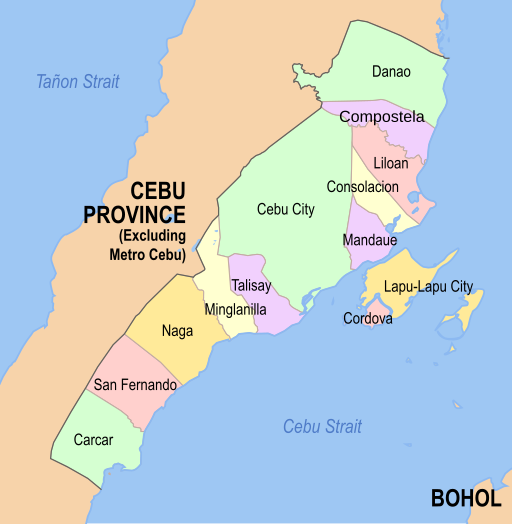
Cebu Province: The Queen City’s Kingdom of Wonders
Introduction
Cebu Province, also known as the Queen Province of the South, is one of the most stunning and historically significant places in the Philippines. It boasts breathtaking beaches, rich cultural heritage, and a vibrant urban center that perfectly blends the past and present. Whether you’re a history buff, an adventure seeker, or a foodie, Cebu has something to offer.
History of Cebu Province
Cebu holds a prestigious place in Philippine history as the country’s oldest city. The province was where Portuguese explorer Ferdinand Magellan first arrived in 1521, marking the beginning of Spanish colonization. The Battle of Mactan, led by Lapu-Lapu, was a historic moment of resistance against foreign rule. Today, Cebu thrives as an economic powerhouse while preserving its rich historical roots.
Geography and Climate
Located in the Central Visayas region, Cebu consists of the main island and over 150 surrounding islands. It enjoys a tropical climate, making it a year-round destination, though the best time to visit is from December to May when rainfall is minimal.
Cebu City – The Heart of the Province
Cebu City, the capital of the province, is a bustling metropolis filled with historical landmarks, modern attractions, and a dynamic nightlife scene. Some must-visit places include Magellan’s Cross, Fort San Pedro, and the Cebu Taoist Temple.
Top Tourist Attractions in Cebu Province
- Magellan’s Cross and Basilica Minore del Santo Niño – Religious and historical icons of Cebu.
- Kawasan Falls – Famous for its turquoise waters and canyoneering adventures.
- Oslob Whale Shark Watching – Experience swimming with the gentle giants.
- Moalboal’s Sardine Run – A mesmerizing underwater spectacle.
- Sumilon Island – A stunning private island with white sand beaches.
Cultural and Religious Heritage

Cebu’s Sinulog Festival is a grand celebration held in January in honor of the Santo Niño. The province is also known for its well-preserved Spanish-era churches and vibrant street food culture.
Cebu’s Best Beaches and Islands
- Malapascua Island – Famous for thresher shark diving.
- Bantayan Island – A laid-back paradise with powdery white sands.
- Camotes Islands – A quiet retreat with stunning natural landscapes.

Food and Cuisine of Cebu
- Lechon Cebu – Dubbed the best roasted pig in the Philippines.
- Puso (Hanging Rice) – A unique way of serving rice.
- Dried Mangoes – A world-famous Cebuano delicacy.
Adventure and Outdoor Activities in Cebu
- Canyoneering in Badian – A thrilling adventure through waterfalls and cliffs.
- Trekking to Osmeña Peak – The highest point in Cebu, offering panoramic views.
- Scuba Diving and Snorkeling – Cebu has world-class dive spots with vibrant marine life.
Cebu’s Economy and Business Growth
Cebu is a major economic hub, with its IT and BPO industry booming. Tourism significantly contributes to the province’s economy, drawing millions of visitors annually.
How to Get to Cebu Province
Cebu is accessible via Mactan-Cebu International Airport, which connects the province to domestic and international destinations. Ferries also link Cebu to other parts of the Philippines.
Best Accommodations in Cebu
From luxury resorts like Shangri-La’s Mactan to budget-friendly hostels, Cebu offers a variety of accommodations for all types of travelers.
Conclusion
Cebu Province is a destination that seamlessly blends history, adventure, culture, and natural beauty. Whether you’re exploring its bustling city, relaxing on pristine beaches, or enjoying local cuisine, Cebu is truly a gem in the Philippines.
FAQs
- What is the best time to visit Cebu Province? – The best months are December to May for dry weather.
- Is Cebu safe for tourists? – Yes, Cebu is generally safe, but always exercise caution.
- What are the must-try Cebuano dishes? – Lechon Cebu, puso, and dried mangoes are top picks.
- How many days should I spend in Cebu? – Ideally, 5-7 days to explore both the city and islands.
- What are the best off-the-beaten-path destinations in Cebu? – Camotes Islands, Dalaguete, and Alegria are worth visiting.
You might want to check on sightseeing in cebu city and Cebu City Travel Guide
Table of Contents
Giovanni Carlo P. Bagayas is a seasoned travel guide and passionate explorer from the Philippines. With years of experience uncovering the hidden gems of his homeland, Giovanni has dedicated his career to showcasing the beauty, culture, and adventure that the Philippines has to offer. As the author of Best Philippines Travel Guide, he combines his expertise and love for travel to provide insightful tips, detailed itineraries, and captivating stories for travelers seeking unforgettable experiences in the Philippines. Giovanni’s mission is to inspire wanderlust and help visitors discover the true essence of his vibrant country.
